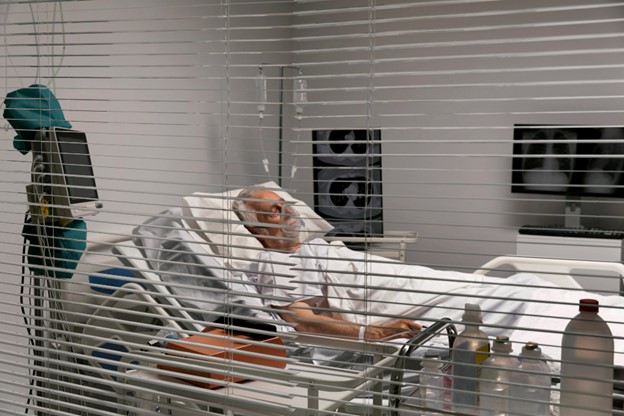In hospitals across the world, medical ventilators play a crucial role. These machines become lifesavers for patients with breathing difficulties. Whether it’s severe lung infections or surgical procedures occurring, ventilators step in to assist. They ensure a steady supply of air directly into the lungs. This helps maintain vital functions while allowing patients time to heal and recover.
This blog aims to make understanding ventilators easier by avoiding technical language. Whether you’re curious or new to healthcare, this information is for you. It will help you grasp the basic working principles of medical ventilators clearly.
\ Having a good grasp of medical technology helps save lives and ease fears. As we explore this topic, our goal is to raise public knowledge. With the right info, communities can better appreciate these critical healthcare innovations.
Understanding Medical Ventilators and Their Components
Medical ventilators are important machines in healthcare settings, providing lifesaving support when breathing is compromised. Ventilators are of two main types: invasive and non-invasive. Invasive ventilators need a tube that goes into the windpipe through the mouth or nose. This approach is typically used in severe cases requiring more intervention.
Non-invasive ventilators, on the other hand, use a mask that fits snugly over the face or the nose, catering to different patient needs where intubation isn’t required.
Every ventilator has key components crucial for its operation. The power source ensures it keeps running without interruptions and often includes battery backups. The control panel is used by doctors to adjust the pressure and volume of air the ventilator delivers. In addition, safety features like alarms and sensors are vital, as they closely monitor the patient’s condition and alert medical staff when needed.
Safety mechanisms in a ventilator system are essential for reliable patient care. For instance, pressure limits are set to avoid too much airflow, which could cause harm. If air pressure levels change unexpectedly, alarms will sound to alert caregivers, allowing them to act quickly. These safety provisions ensure both effective and safe use of ventilators, providing peace of mind for patients and healthcare providers alike.
The Mechanical Ventilation Process Explained
A ventilator draws air from the room or gets it from an oxygen tank. It then pushes this mix into the lungs in regular cycles. This rhythm helps the lungs by allowing them time to heal and rest.
The ventilator takes air and mixes it with oxygen, adjusting as needed. It delivers this mix into the lungs carefully and steadily. Tiny sensors check that the right amount and pressure go to the patient. The used air goes out carrying waste gases like carbon dioxide.
Ventilators have different working modes, such as volume control and pressure control. In volume control, a fixed amount of air goes into each breath. In pressure control, it keeps constant pressure, letting the air volume change if needed. Each mode is suited for different patient requirements.
Applications and Safety Measures in ICU Settings
Ventilators in ICUs are essential for helping patients with breathing issues. They assist when someone’s breathing is weakened due to illness or surgery complications. By easing the breathing process, ventilators allow doctors to treat the patient’s underlying issues more effectively.
During the COVID-19 crisis, ventilators became incredibly vital in hospitals worldwide. Many patients experienced serious breathing problems, and ventilators provided necessary support. These devices gave patients crucial time to fight off the virus and recover.
Though ventilators save lives, using them involves risks that must be managed well. Healthcare professionals follow strict rules to avoid complications. Constant checks of the machines and maintaining clean conditions are essential. Quickly responding to any problems ensures that ventilators help patients safely and effectively.
The Advancements and Future Directions in Ventilator Technology
Medical ventilators have come a long way since their early designs. Initially, these machines were simple devices pushing air into the lungs. Now they use advanced technology to do much more in patient care. Modern ventilators have sensors checking how a patient’s lungs breathe. They deliver just the right amount of air and oxygen needed. Ventilator machines today are lighter and quieter than ever before. Portable ventilators allow patients to move while breathing comfortably. These changes ease life for both patients and healthcare workers.
The future of ventilators seems very promising with ongoing research. Scientists are working on making ventilators more efficient and adaptable to various needs. The main focus is on creating user-friendly and cost-effective devices so more hospitals, including those in remote areas, can afford them. Innovations aim at connecting ventilators with other medical equipment seamlessly. This creates better monitoring conditions for the patient’s health situation. Developing energy-efficient models is also a priority to help cut operational costs. Smaller devices suitable for home care are another key development focus.
Innovation in ventilator technology plays an essential role in patient care outcomes. With improved devices, more lives are saved, and recovery times are quicker.
Advanced Ventilator Support: Tailored, Safer, and Faster Recovery
At Ananth Reddy Critical Care Centre, patients receive personalized care designed to meet their specific needs. Innovative ventilator technologies reduce support time, while gradual weaning processes enhance safety and recovery. These advances lead to improved outcomes and shorter hospital stays. In challenging emergencies, trust our expert team to provide reliable, state-of-the-art ventilator support.
For emergency ventilator care, contact Ananth Reddy Critical Care Centre immediately!



